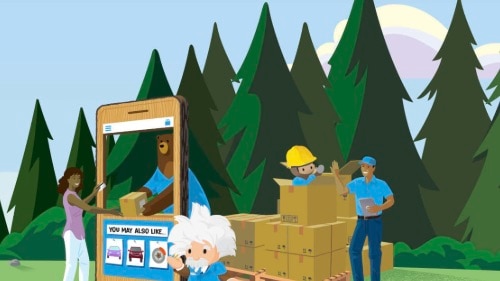The retail community can always expect to get a few nuggets of wisdom from Sucharita Kodali, VP and Principal Analyst at Forrester. Whether on stage at one of the many retail conferences worldwide, on a cable news show or chatting with the Retail TouchPoints team, she has the ability to effortlessly break down complex concepts — and transform them into actionable insights.
I had the opportunity to catch up with Sucharita a few weeks after the National Retail Federation’s BIG Show, after we played a game of email tag to sync up our relentless schedules. It was worth the wait. After riding the high of the BIG Show, where we heard about 2018 growth and how retail was being reinvented, I was seeing the industry through rose-colored glasses. My goal for our conversation was to break through the buzz and get to the nitty-gritty of whether the latest trends hold weight, and if there are other social and economic factors that retailers should consider this year. You can listen to the full episode to get all the juicy details, but here are some key takeaways from our conversation.
In 2019, retailers should…
1. Prioritize their online presence
We heard this a few times throughout our Holiday Insights Series, but Forrester’s research confirms it. The retailers that saw strong growth in Q4 were the ones with stellar online shopping experiences, so Sucharita recommends that retailers assess their presence and see where improvements can be made. She noted, “If you have a good online presence, that’s your best opportunity for gaining wallet share.”
2. Consider cutting the dead weight
Yes, that means those unprofitable stores in low-traffic properties. I truly believe that brick-and-mortar is going through an identity crisis of sorts. Retailers are hearing so much about in-store innovation and digital disruption, but their existing stores simply don’t have the environment to support it because they are old or lagging in some way. They also don’t bring in enough traffic and revenue to warrant such an investment.
“A lot of retailers are closing some of their excess stores and that’s a challenge that just takes time,” Sucharita explained. Moreover, “about only 20% of malls and shopping centers in the U.S. are ‘A’ properties; the rest are not great. A lot of these are 20- or 30-year leases that began when properties were much more attractive. The shakeout of physical retail is something we’ll continue to see.”
3. Diversify based on consumer behaviors and industry white space
Despite the buzz surrounding experiential retail, Sucharita noted that it’s not a super scalable idea due to costs associated with store updates, workforce hiring, and training, among other factors. Instead, retailers should focus on diversifying their investments.
“Whether it’s by getting into an adjacent business or investing in services, retailers need to find other ways to make money,” Sucharita said. She brought up an excellent example: Sears. The Discover card got its start with Sears, and the company even sold Allstate Insurance. Ironically, the retailer divested these businesses to focus more on selling physical goods. And we all know how that turned out. (Listen to the full interview to learn how you can take cues from Amazon and enter into a new service/product market!)
4. Save for a rainy day
Throughout our conversation, Sucharita kept repeating that retail is a “zero-sum game.” As the saying goes, “what goes up must come down.” She explained that usually when there are a few good quarters, she worries that bad quarters aren’t far behind. So, what should retailers do to prepare? “Hunker down and prepare for tougher times,” she said. “Be conservative in your expectations for the future. Plan to flex down on marketing spend and variable spend overall.”
Sucharita shared a lot of powerful perspectives on the industry, and laid out how outside factors (such as trade and foreign policy) may impact retailers. Although there’s an air of uncertainty around retail’s future, I think if anything, our conversation reaffirms the importance of understanding your customers, their behaviors and expectations. It truly is the foundation for developing a strategic plan for your business.
This article was originally published on Retail TouchPoints.




























